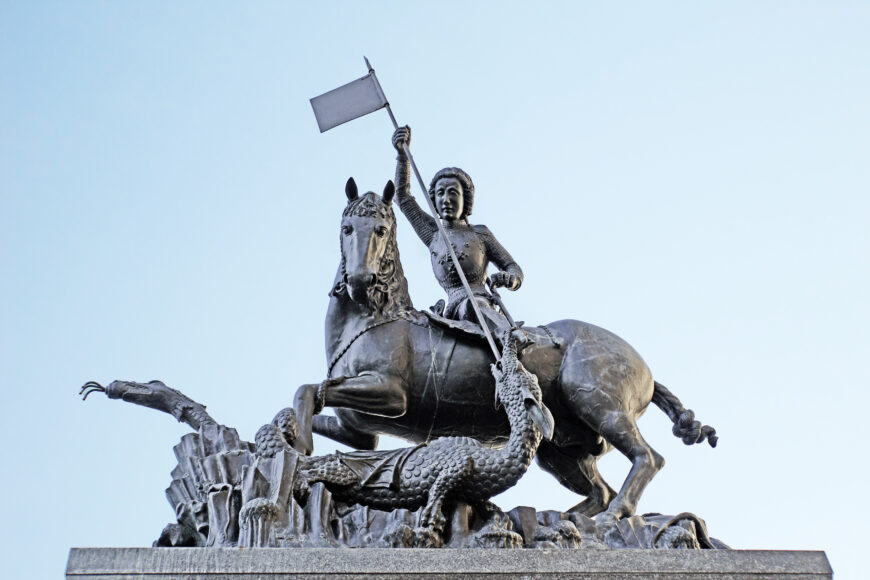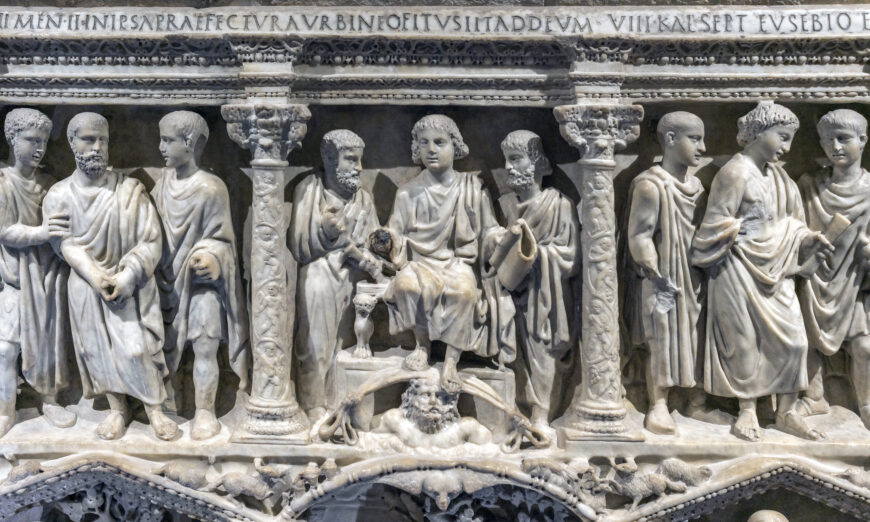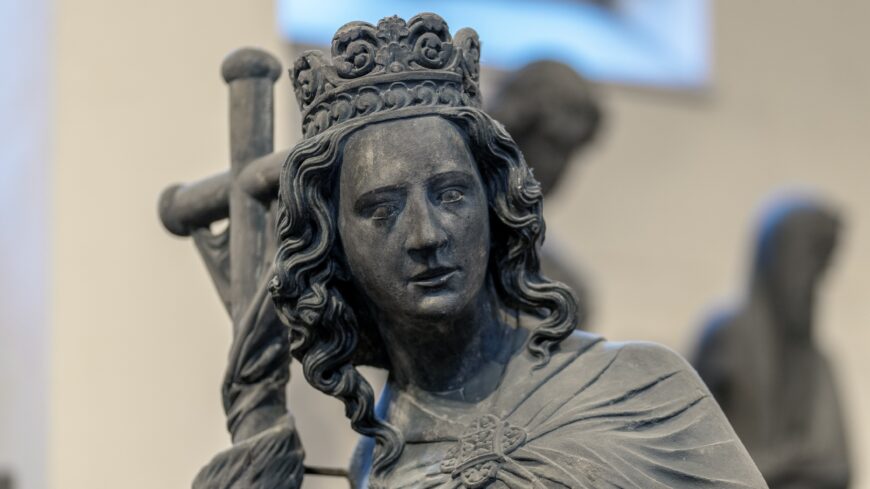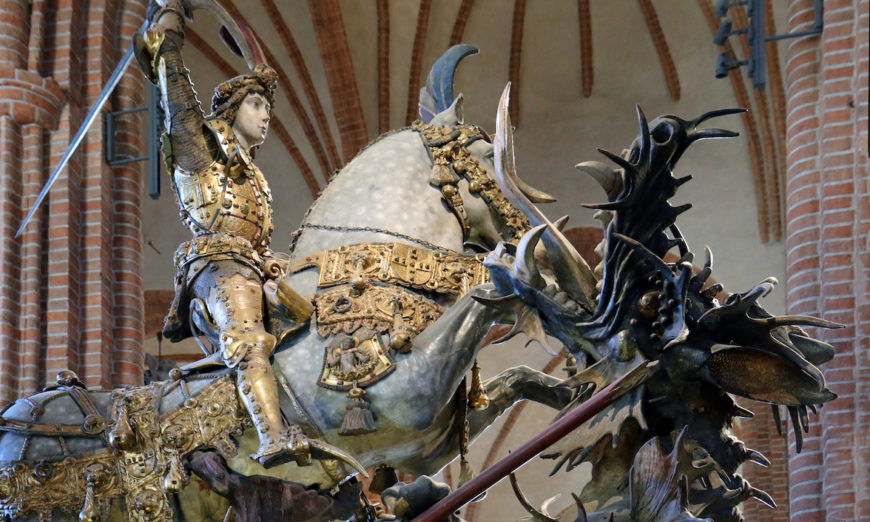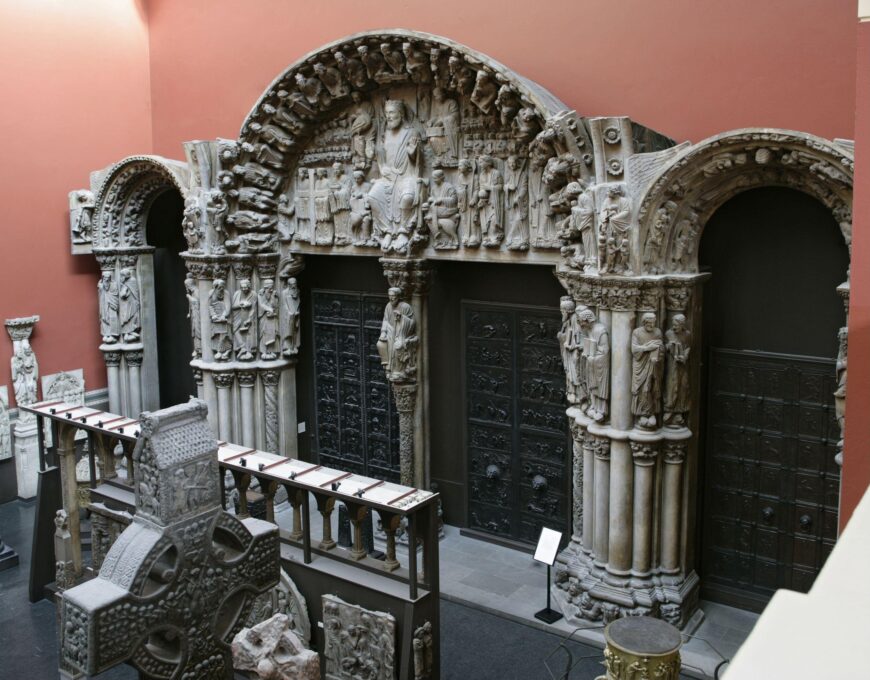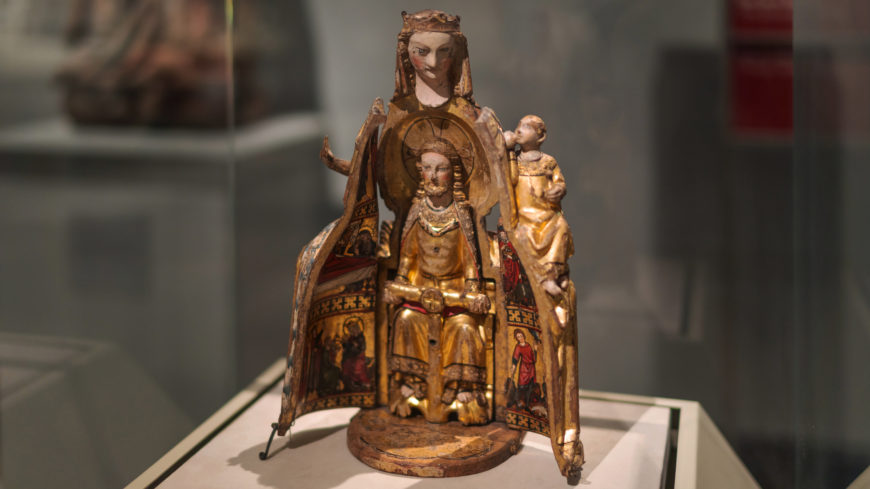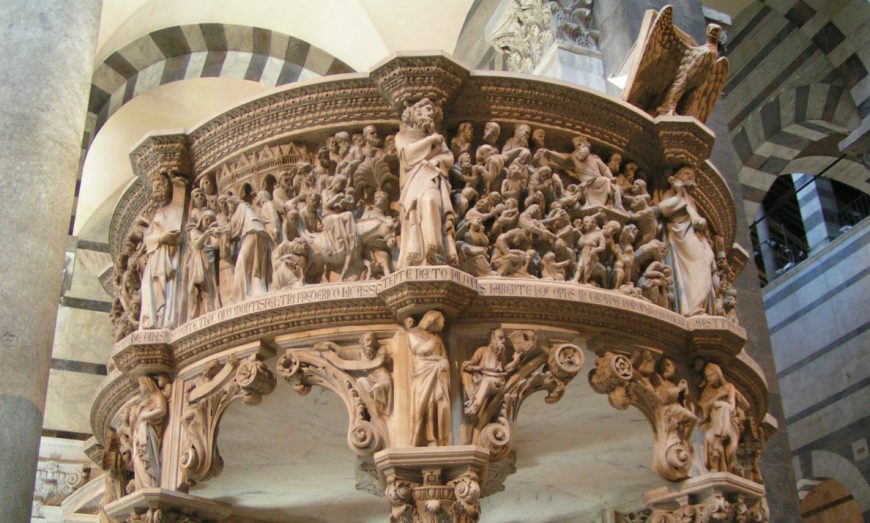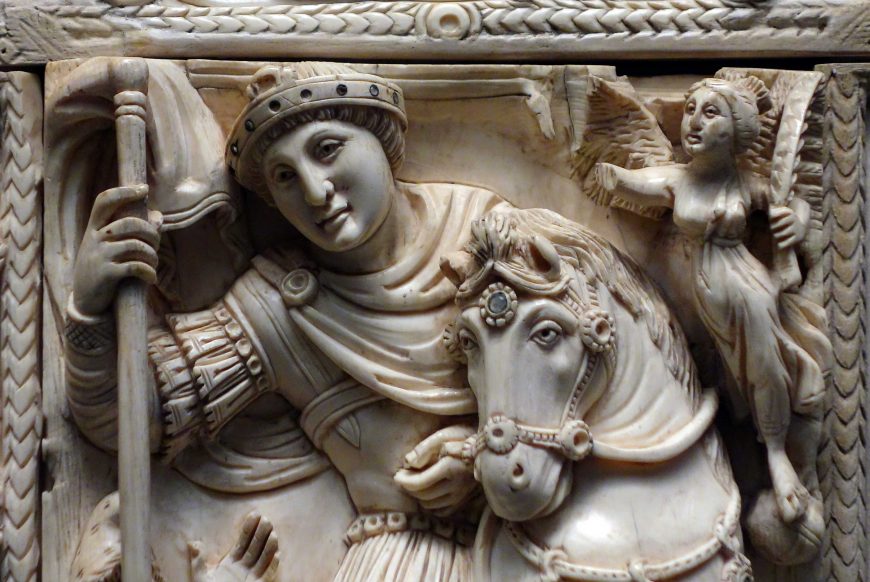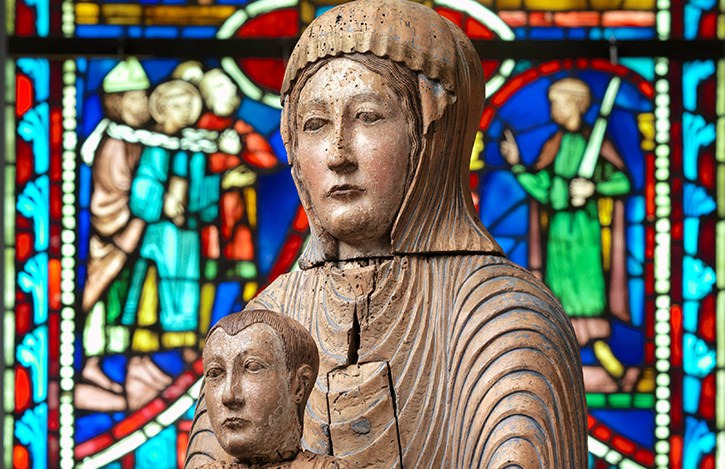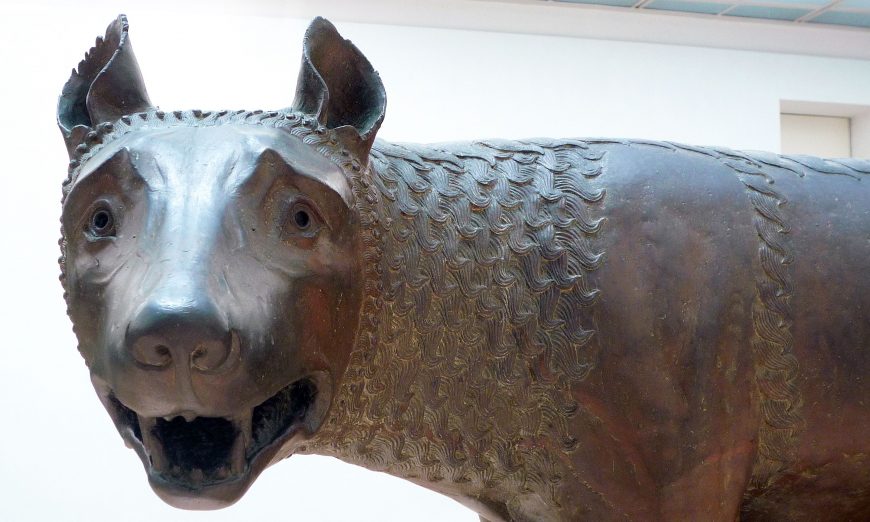The Virgin of Jeanne d’Evreux, 1324-39, gilded silver, basse-taille, enamels on gilded silver, stones, and pearls, 68 cm high (Musée du Louvre)
[0:00] [music]
Dr. Steven Zucker: [0:05] We’re in the Louvre in Paris, looking at an extraordinary sculpture from the first half of the 14th century.
Dr. Beth Harris: [0:12] This is an incredibly luxurious object. It’s made out of silver covered in gold. Clearly, this was made for someone very important and very wealthy.
Dr. Zucker: [0:22] In addition to the gold and silver, there’s enamel, there are pearls, and there’s crystal.
Dr. Harris: [0:27] She originally wore a crown on her head.
Dr. Zucker: [0:29] This was likely commissioned by the king of France, Charles IV, for his wife, Jeanne d’Evreux.
Dr. Harris: [0:35] This is known as the “Virgin of Jeanne d’Evreux,” but this beautiful golden figure is more than a sculpture.
Dr. Zucker: [0:40] It’s a reliquary. It was intended to hold sacred relics associated with the Virgin Mary. It was given to the Abbey of Saint-Denis just north of Paris. This was especially important religious center. It was where the kings and queens of France were buried.
Dr. Harris: [0:54] What makes this so typical of the Gothic period is the extraordinary tenderness we see between the mother and child. Earlier in the Gothic period, we saw Mary represented very frontally, holding the Christ Child also positioned frontally on her lap. Here, Christ is propped up on her hip in a way that seems very natural.
Dr. Zucker: [1:14] And tenderly touching her mouth with his hand. The frontal image that you refer to comes out of the Byzantine tradition. As the Virgin Mary gains increasing prominence in the medieval era, especially in western Europe, as the cult of the Virgin grows, there is the introduction of new ways of representing her.
Dr. Harris: [1:31] Look at the Virgin’s long neck and the way that it tilts gracefully toward the Christ Child. In his left hand, he holds a pomegranate.
Dr. Zucker: [1:38] A symbol of resurrection, recalling not the beginning of his life, but the end.
Dr. Harris: [1:42] Which is not unusual in images of the Virgin and Child. We frequently see a foreshadowing of Christ’s suffering and death on the cross.
Dr. Zucker: [1:51] If it wasn’t for the pomegranate, we would have no inkling of that terrible end because there seems to be nothing but tenderness that’s represented here.
Dr. Harris: [1:58] We see this increasing interest in human emotion, human interaction, here in this small statuette. We also see it on the Gothic cathedrals that were built in and around Paris.
Dr. Zucker: [2:09] In fact, in Notre Dame de Paris, the major cathedral in the city itself, there is a large sculpture that looks quite similar to this.
[2:17] It has the same emphasis on an elegant drapery, on an elegant sway to the body, especially the jutting hip. We see it in a manuscript that had also been owned by this queen that is now in the collection of the Metropolitan Museum of Art, in one particular illumination that shows the Annunciation.
Dr. Harris: [2:33] To me, this sway of the body gives the figure a sense of movement and animation that’s incredibly lifelike, but we shouldn’t confuse this with the later contrapposto that develops in the Renaissance or that we see in ancient Greek and Roman sculpture, where we clearly see a bent knee pressing through the drapery and a figure that’s in correct proportion.
[2:53] This figure is very elongated and that sway is not so much created by a body that’s realistic, but instead on this very complicated curving of the drapery.
Dr. Zucker: [3:05] The metalworkers who produced this were taking great care with that drapery. I’m particularly fond of the way that her sleeve wraps over her arm.
Dr. Harris: [3:12] I like the way it pools down at her feet. If we go to the Virgin’s left side, there’s this wonderful passage of drapery where it forms a zigzag pattern down her legs.
Dr. Zucker: [3:22] The figure stands on a base that is itself a work of art.
Dr. Harris: [3:25] The base is carried by four lions, and then we see figures in niches and these frame enamel scenes showing moments from the life of Christ. For example, we see the Annunciation, where the angel Gabriel tells Mary that she will conceive Christ, and then as we move around the reliquary, we get the scenes of the crucifixion and the resurrection of Christ.
Dr. Zucker: [3:47] Enamel is the addition of, usually, ground colored glass that’s heated on a metal surface, and adheres to that surface and creates these lovely, deep colors in this case.
Dr. Harris: [3:58] It makes sense to me that the prophets are on the base that the Virgin Mary stands on. The prophets are figures from the Old Testament who, according to Christian tradition, foretell the coming of Christ, and above, we see Mary holding the Christ Child.
Dr. Zucker: [4:12] The sumptuousness of this sculpture creates a clear relationship between the political power of the king and queen of France and the spiritual power that the Virgin Mary and Christ represent.
[4:22] [music]


